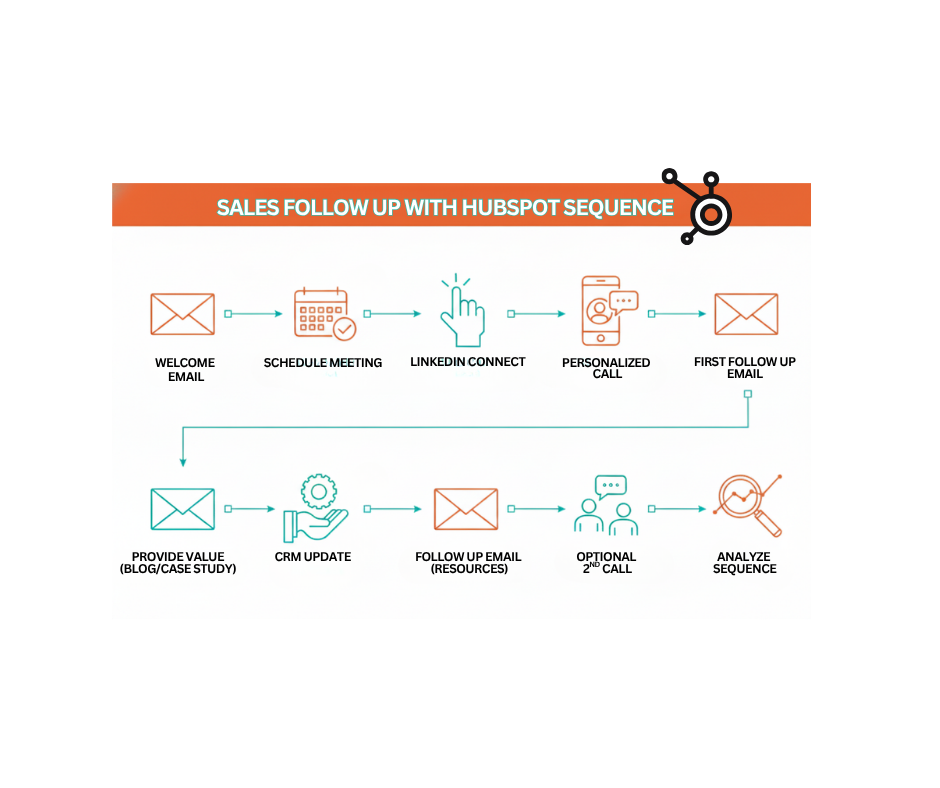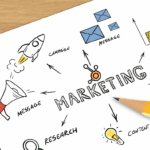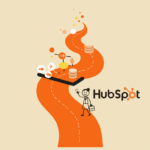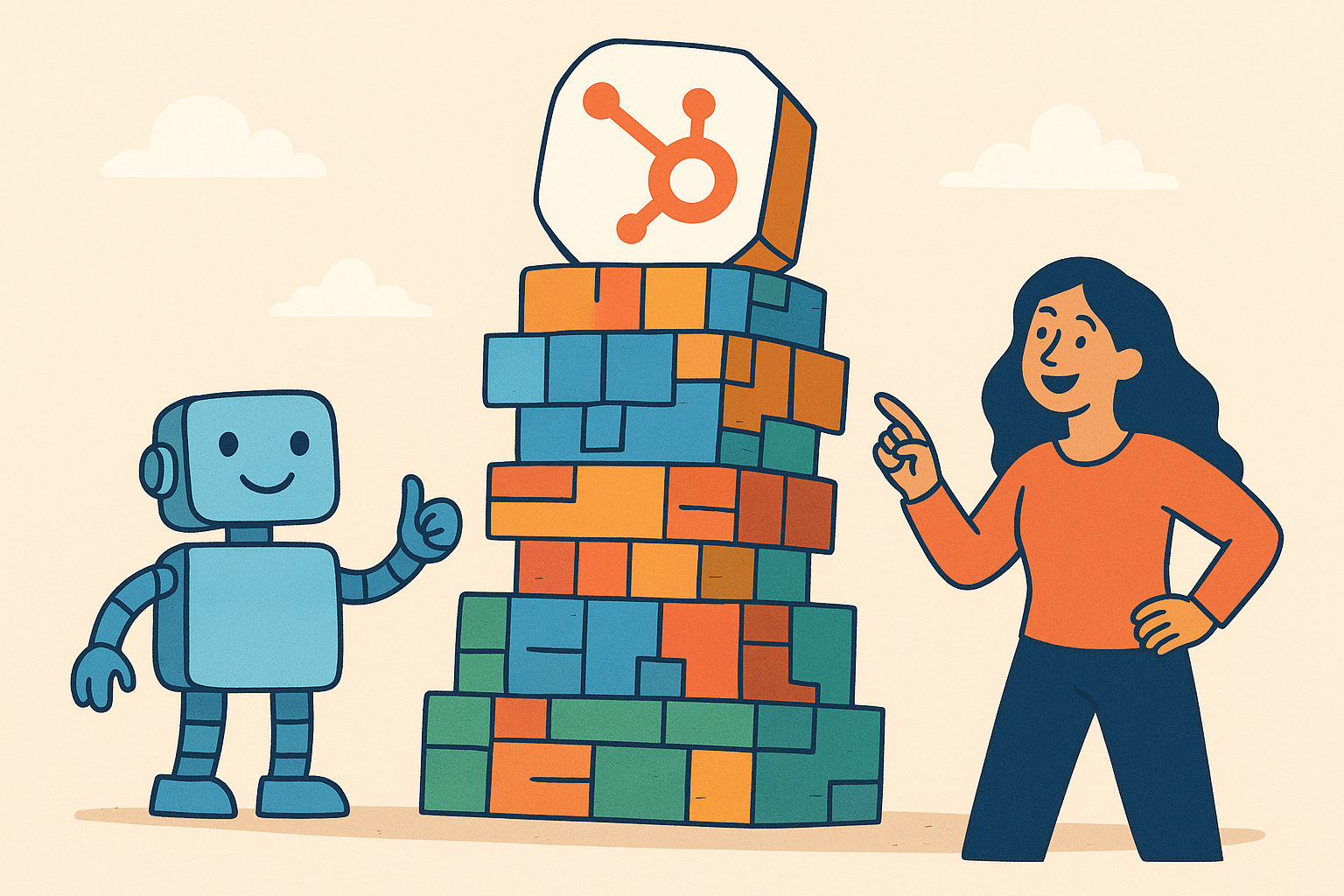
How to Automate Your Sales Follow-Up with HubSpot Sequences (Without Sounding Like a Robot)
The Follow-Up Black Hole
The life of a sales professional is a constant battle against time. The harsh reality is that the average sales rep spends hours every week on manual follow-up tasks, yet studies consistently show that 80% of sales require at least five follow-ups to secure a meeting or close a deal. In the rush to manage demos, discovery calls, and administrative work, this crucial, repetitive outreach often falls into the dreaded “follow-up black hole,” leading to missed opportunities and inconsistent customer experiences.
The Problem: Manual follow-up is time-consuming, inconsistent, and impossible to scale as your pipeline grows. A missed follow-up or a delayed response can mean the difference between winning and losing a deal.
The Solution: HubSpot Sequences are the perfect tool to automate and streamline this vital process. They ensure your outreach is consistent, timely, and—most importantly—feels personalized, allowing you to scale your efforts without sacrificing quality.
This post will move beyond the basic definitions. We’ll cover exactly what Sequences are, differentiate them from other HubSpot automation tools, provide a step-by-step guide to building your first high-converting sequence, and show you how to analyze the data to ensure your outreach always sounds human.

What Are HubSpot Sequences? (And What They Are Not)
Understanding what Sequences are versus what they are not is the key to using them effectively and avoiding the “robot” sound.
A Simple Definition:
HubSpot Sequences are a series of automated, one-to-one emails and task reminders sent directly from a sales rep’s personal inbox over a predefined period. They are designed specifically to support direct sales engagement and personalized lead nurturing.
Key Differentiator: Sequences vs. Workflows
This is the most common point of confusion. They serve entirely different masters:
| Feature | HubSpot Sequences | HubSpot Workflows |
| Primary Purpose | 1-to-1 sales engagement and follow-up. | 1-to-Many marketing automation, lead scoring, internal alerts. |
| Sender Address | Sent from the rep’s personal inbox (e.g., repname@company.com). | Sent from a general marketing address (e.g., marketing@company.com). |
| Unenrollment | Automatically unenrolls upon any contact reply or when a meeting is booked via a HubSpot Meetings link. | Unenrollment is based strictly on defined criteria or goals. |
| Conclusion: Use Sequences for direct sales interaction; use Workflows for broader list management and internal operations. |
Key Differentiator: Sequences vs. Marketing Email
Sequences: Emails look and feel like a standard, one-to-one email. They use the rep’s personal signature and are best kept plain text or lightly formatted to maintain a human tone.
Marketing Email: Designed for mass communication, often includes rich HTML design elements, and legally requires an unsubscribe link.

The Top 5 Benefits of Using Sequences for Sales
When deployed correctly, Sequences fundamentally change the productivity and effectiveness of your sales team:
Boost Productivity and Save Hours: By automating timely follow-ups, sequences eliminate hours of manual administrative work, freeing up reps to focus on high-value activities like live discovery calls and custom proposal creation.
Ensure Consistent and Timely Communication: Every lead, whether followed up by the top rep or a new hire, receives the same high-quality, timed outreach cadence. This eliminates forgotten leads and ensures no prospect falls through the cracks.
Scale Your Outreach: Sequences allow a single sales rep to manage a significantly larger pipeline effectively. You can engage with more prospects than you could manually without sacrificing the quality or personalization of your outreach.
Personalize at Scale: Sequences are built to handle personalization. Using personalization tokens for name, company, or even dynamic content based on entry criteria allows the automated email to feel highly relevant to the individual recipient.
Improve Your Process with Data: Sequences provide built-in performance tracking. You can immediately see which templates have the best open rates, which subject lines generate replies, and at which step prospects are most likely to book a meeting.
Step-by-Step Guide: Building Your First High-Converting Sequence
Follow these four steps to create your first effective sequence, designed to get results without sounding robotic.
Step 1: The Pre-Flight Check (Before You Build)
Connect Your Inbox: Ensure your personal Gmail or Outlook inbox is connected to HubSpot for seamless logging and sending.
Prepare Assets: Draft your templates (even if they are simple and plain text), prepare your calls scripts, and have your LinkedIn connection messages ready.
Define the Goal: Clearly state the sequence’s purpose: Is it to book a first meeting, re-engage a cold lead, or send a post-demo follow-up?
Step 2: Creating the Sequence in HubSpot
Navigate to the Sales area in the top navigation bar, then select Sequences.
Click “Create sequence” and choose to build from scratch or use a pre-built template relevant to your goal (e.g., Sales Prospecting).
Step 3: Adding Your Steps (The Recipe for Success)
The First Touch: This initial email must be personalized and offer immediate value. Use personalization tokens to reference something specific about the prospect or their company.
Setting Delays: This is critical for sounding human. Don’t send five emails in five days. Space them out logically (e.g., Day 1: Email, Day 3: Task/Call, Day 7: Email, Day 10: Breakup Email).
Mixing Your Media (Multi-Channel Tasks): The sequence shouldn’t just be email. Add tasks to prompt multi-channel engagement:
Task: Call the prospectTask: Connect on LinkedIn and send a personalized messageTask: Research their company for a custom talking point before the next email
The Breakup Email: End the sequence gracefully with a final, value-driven email that signals you are closing the loop.
Step 4: Customizing Settings and Unenrollment
Thread Timing: Decide whether emails in the sequence should be sent in the same email thread (more personal) or as brand-new emails (more likely to be opened).
Understanding Automatic Unenrollment: This is HubSpot’s safety net. The sequence will automatically pause if the contact replies to any email, or if the sales rep books a meeting with the contact. Ensure this feature is active.

Best Practices for Enrolling and Managing Contacts
The power of Sequences must be paired with smart enrollment practices to avoid sounding like spam.
Who to Enroll: Enroll contacts who have earned your attention:
Inbound leads who have downloaded a high-intent piece of content.
Prospects who went quiet after an initial meeting or demo.
Specific lists of cold prospects you are targeting via a defined outreach strategy.
Event attendees who meet specific criteria.
How to Enroll Contacts: You have flexibility here:
Individually from a contact record (for highly personalized outreach).
In bulk from a contact list view (use caution and ensure list segmentation is perfect!).
Directly from your Gmail or Outlook inbox using the HubSpot Sales Extension for immediate follow-up.
Monitoring Your Active Sequences:
Regularly use the
Manage Sequencestab to keep track of contacts who are active, paused, or have completed the sequence. This allows you to manually intervene when necessary.Know how to quickly unenroll or pause a sequence for a specific contact if their status changes (e.g., they become a customer mid-sequence).
Pro-Tips: Level Up Your Sequence Game
Ready to move beyond the basics? Implement these advanced tactics to elevate your personalization and effectiveness:
Create Sequences for Different Scenarios: Consistency doesn’t mean monotony. Build specific sequences tailored to different stages or personas. Have distinct sequences for: Post-Demo Follow-Up, Cold Prospecting (by persona), Lead Re-engagement (for old “Closed-Lost” opportunities), and New MQL Nurturing.
The Power of the To-Do Task: Use the sequence task reminder to force a moment of personalization. Before an automated email sends, add a manual task that says: “Review contact’s LinkedIn profile for a personalized talking point to add to Step 3 email.”
Analyze and Optimize Relentlessly: Sequences provide great data. Regularly review your performance dashboard. Which templates have the highest reply rates? Where in the sequence are people dropping off? Use A/B testing by duplicating a sequence and making a small change to the subject line or CTA to scientifically improve your results.
Automate, Personalize, and Close More Deals
HubSpot Sequences are the perfect bridge between the manual effort of effective one-to-one sales outreach and the necessity of scaling your efforts. They are the bridge between manual effort and mass automation.
The key takeaway is that automation should empower the salesperson, not replace them. Sequences ensure consistent, timely outreach while allowing reps to prioritize high-value activities like genuine conversations, personalization, and closing.
Need expert help designing sequences that truly convert? Contact Mobius NEXT for a free Sequence Strategy Session.
Resources:
HubSpot Knowledge Base – Sequences: https://knowledge.hubspot.com/sequences
HubSpot Academy – Sales Enablement/Sequences Course: https://academy.hubspot.com/
HubSpot Blog – Sales Sequences Best Practices: https://blog.hubspot.com/sales/sales-sequences



